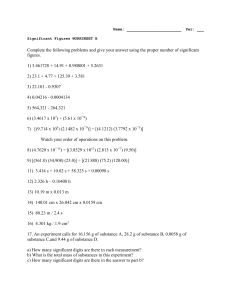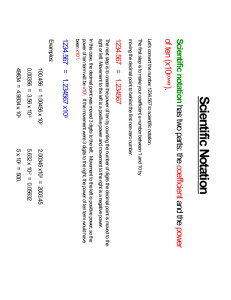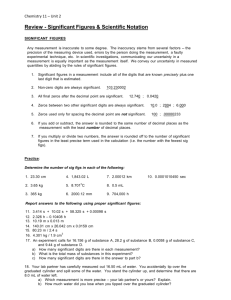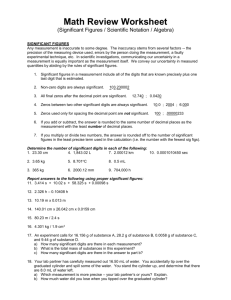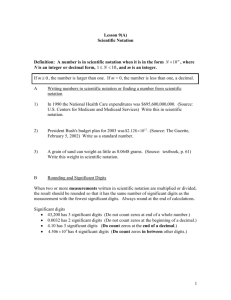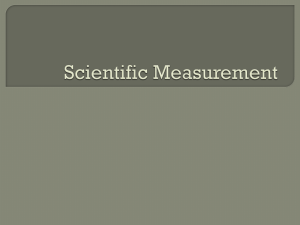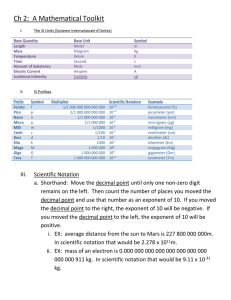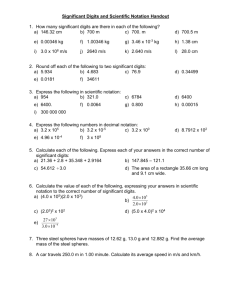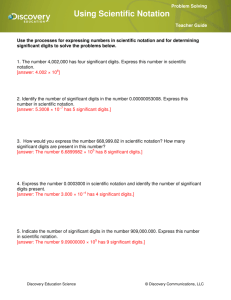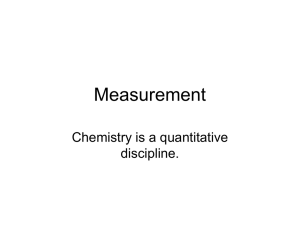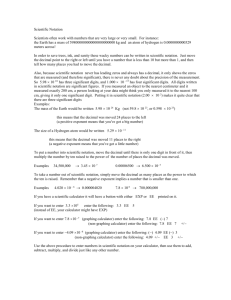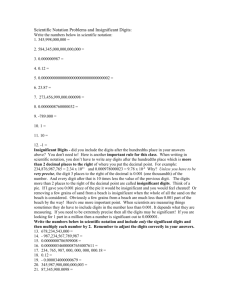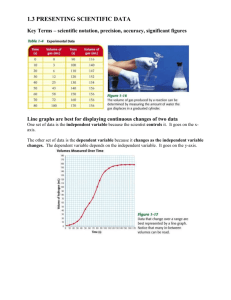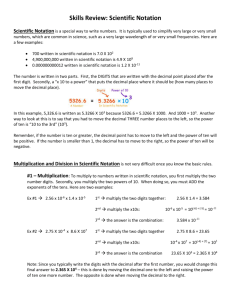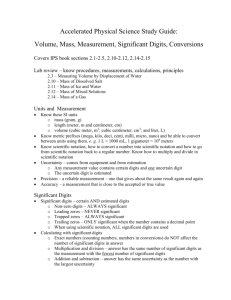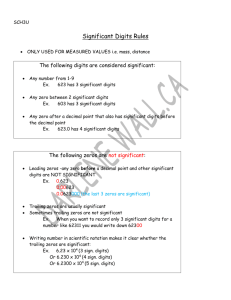Significant Figures and Scientific Notation Review
advertisement
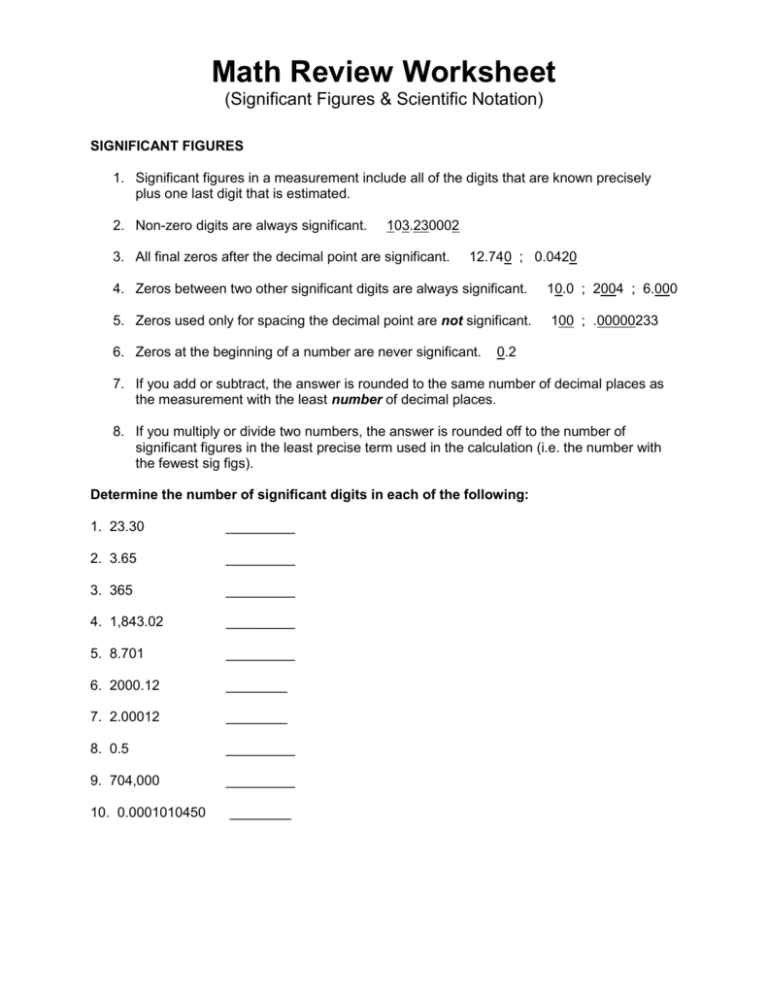
Math Review Worksheet (Significant Figures & Scientific Notation) SIGNIFICANT FIGURES 1. Significant figures in a measurement include all of the digits that are known precisely plus one last digit that is estimated. 2. Non-zero digits are always significant. 103.230002 3. All final zeros after the decimal point are significant. 12.740 ; 0.0420 4. Zeros between two other significant digits are always significant. 10.0 ; 2004 ; 6.000 5. Zeros used only for spacing the decimal point are not significant. 100 ; .00000233 6. Zeros at the beginning of a number are never significant. 0.2 7. If you add or subtract, the answer is rounded to the same number of decimal places as the measurement with the least number of decimal places. 8. If you multiply or divide two numbers, the answer is rounded off to the number of significant figures in the least precise term used in the calculation (i.e. the number with the fewest sig figs). Determine the number of significant digits in each of the following: 1. 23.30 _________ 2. 3.65 _________ 3. 365 _________ 4. 1,843.02 _________ 5. 8.701 _________ 6. 2000.12 ________ 7. 2.00012 ________ 8. 0.5 _________ 9. 704,000 _________ 10. 0.0001010450 ________ Give your answers to the following problems using proper significant figures: 11. 3.414 + 10.02 + 58.325 + 0.00098 12. 2.326 – 0.10408 13. 10.19 x 0.013 14. 140.01 x 26.042 x 0.0159 15. 80.23 ÷ 2.4 16. 4.301 ÷ 1.9 17. An experiment calls for 16.156 g of substance A, 28.2 g of substance B, 0.0058 g of substance C, and 9.44 g of substance D. a) How many significant digits are there in each measurement? Substance A ____________ Substance B ____________ Substance C ____________ Substance D ____________ b) What is the total mass of substances in this experiment? Total: _________________ c) How many significant digits are there in the answer to part b? ________________ 18. Your lab partner has carefully measured out 16.50 mL of water. You accidentally tip over the graduated cylinder and spill some of the water. You stand the cylinder up, and determine that there are 8.0 mL of water left. a) Which measurement is more precise – your lab partner’s or yours? Explain. b) How much water did you lose when you tipped over the graduated cylinder? SCIENTIFIC NOTATION How many significant figures does the measurement of 100 mm have? Your first answer might be “1”. However, reporting the value as 100.0 suddenly turns the term having one significant figure into a term having four significant figures. To eliminate any possible confusion, the scientific and engineering communities often employ scientific notation. Using scientific notation, the experimenter can report the above measurement as 1.00x102 mm. With this notation, it is clear that three significant digits are intended. Typically 1 whole number is placed to the left of the decimal, and this number is then multiplied by the appropriate power of ten. Write the following numbers in scientific notation and indicate the number of significant digits, using the procedure explained above. Number 19. 156.90 20. 12,000 21. 0.0345 22. 0.00690 Scientific Notation Significant Figures Solve the following problems, placing your answers in scientific notation with the proper number of significant digits. 23. (6.6x10-8) ÷ (3.30x10-4) = 23. ___________________ 24. (2.5x10-8) x (3.0x10-7) = 24. ___________________ 25. (2.67x10-3) – (9.5x10-4) = 25. __________________ 26. (1.56x10-7) + (2.43x10-8) = 26. __________________
